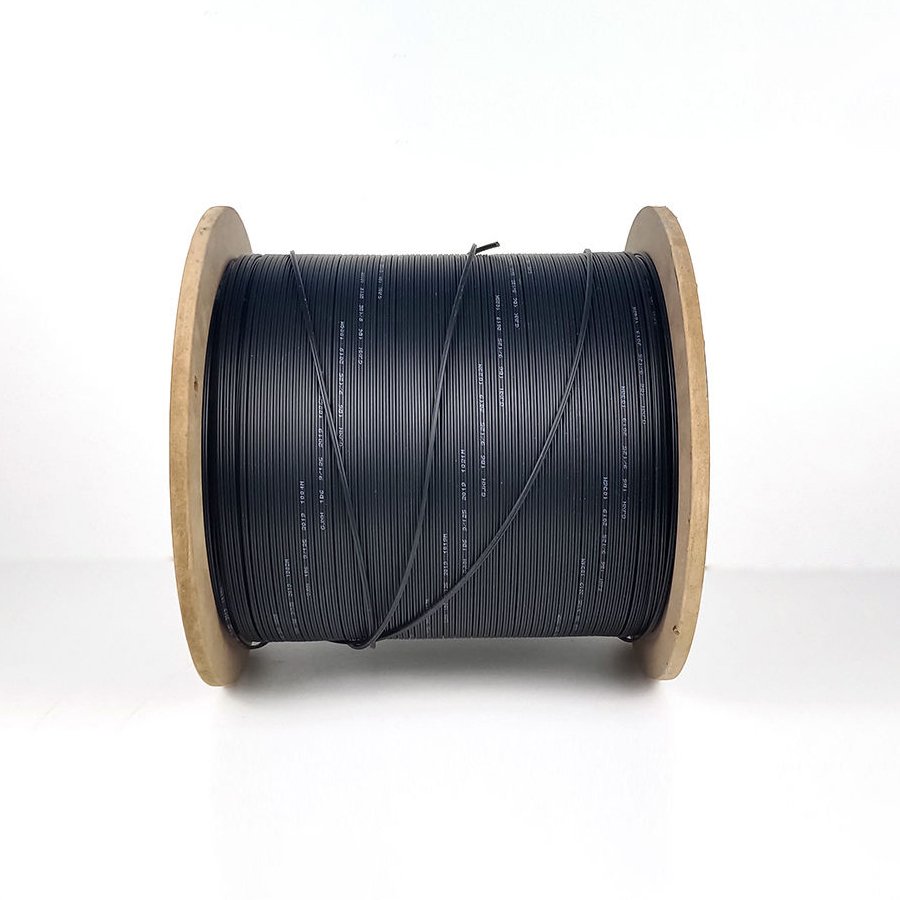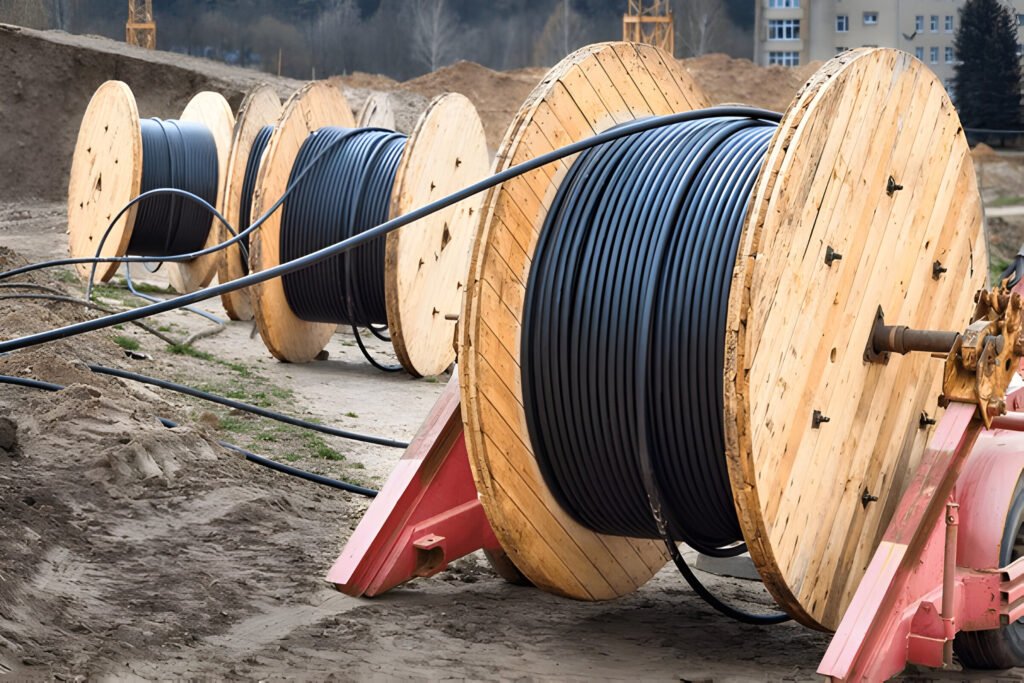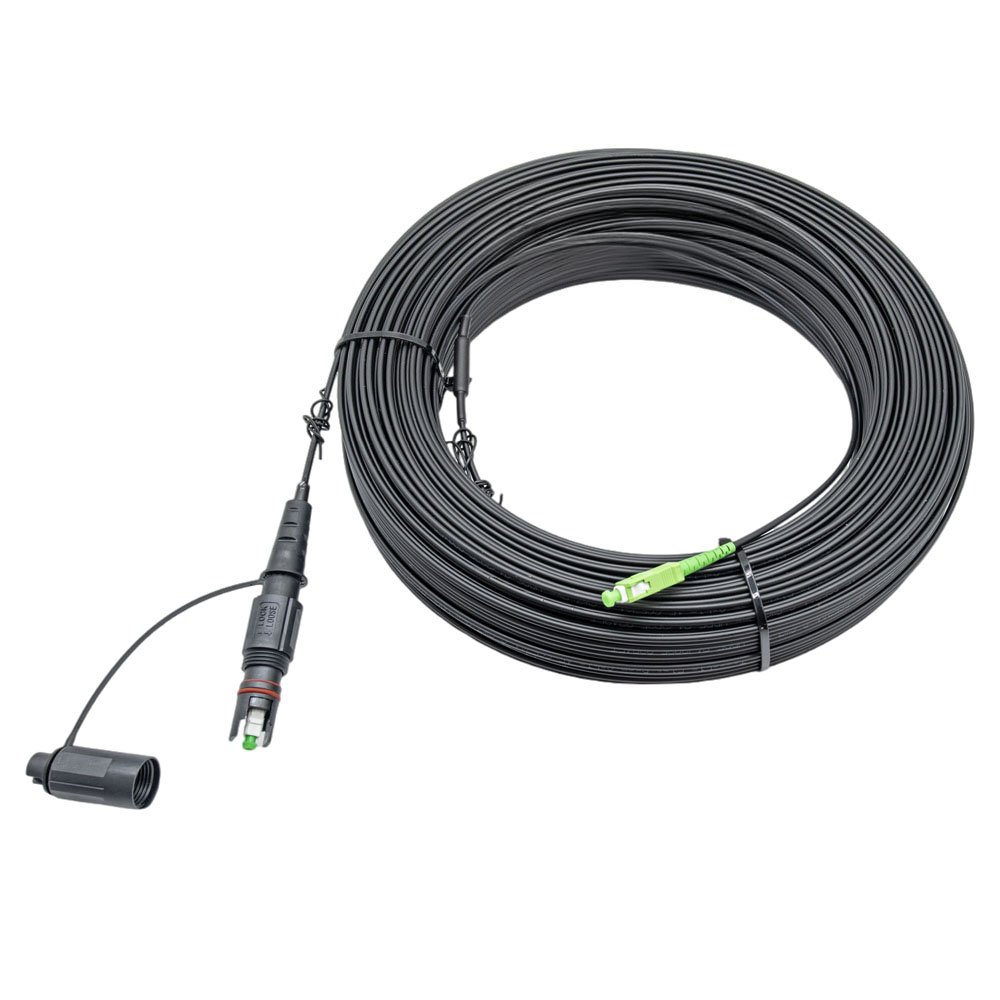Think of optical cable types as the veins of our digital age, pulsing with light to keep data flowing smoothly. These cables aren’t one-size-fits-all—each type is crafted for specific jobs, from linking oceans to wiring your home. Understanding the variety of optical cable types is like picking the perfect pair of shoes: match them to your terrain, and you’re set for success.
In this guide, we’ll explore a wide range of fiber optic cable types, classifying them by environment (indoor vs. outdoor) and use case (aerial, direct buried, armored, underwater, duct, flat drop). We’ll use relatable analogies—like comparing single mode cables to marathon runners or armored cables to tanks—to make it digestible. By the end, you’ll know which optical cable type fits your needs, and we’ll steer you toward CommMesh’s top-tier solutions. Let’s dive into the world of light and fiber!
Optical Cable Types by Environment: Indoor vs. Outdoor
Indoor Optical Cable Types: The Homebodies

Imagine indoor optical cable types as cozy housecats—flexible, lightweight, and built for comfort inside buildings. These cables prioritize ease and safety in controlled spaces.
What They Look Like
- Structure: Tight-buffered fibers with a soft, flame-retardant jacket (e.g., PVC or LSZH—low smoke zero halogen).
- Core: Single mode (8-10 microns) or multimode (50/62.5 microns).
Where You’ll Find Them
- Office LANs connecting desks and rooms.
- Data centers linking servers over short runs.
- Riser or plenum spaces in multi-story buildings.
Why They’re Great
- Flexibility: Easy to bend around corners.
- Safety: Fire-resistant for indoor codes.
- Simplicity: Quick to install with connectors like LC.
The Catch
- Fragility: Not built for outdoor wear and tear.
CommMesh offers indoor multimode cables with LC Duplex connectors—perfect for data centers.
Outdoor Optical Cable Types: The Trailblazers

Now, picture outdoor optical cable types as rugged trail runners—tough, weatherproof, and ready for the wild. These cables are engineered to survive the elements.
What They Look Like
- Structure: Loose-tube design with gel or water-blocking tape, plus a hardy jacket (e.g., polyethylene).
- Core: Single mode or multimode, depending on distance.
Where You’ll Find Them
- Telecom lines across cities.
- FTTH runs to homes.
- Outdoor campus networks.
Why They’re Great
- Weatherproof: Resists rain, UV, and temperature swings.
- Distance: Single mode options stretch far.
- Durability: Built to last outside.
The Catch
- Stiffness: Less flexible—needs careful routing.
CommMesh’s outdoor single mode cables, paired with FC connectors, are FTTH-ready.
Optical Cable Types by Use Case
Aerial Optical Cable Types: The Sky Dancers

Think of aerial optical cable types as acrobats twirling between poles—light, resilient, and soaring high. These cables hang outdoors, defying wind and weather.
What They Look Like
- Structure: Fibers with a strength member (e.g., steel or fiberglass), UV-resistant jacket.
- Core: Single mode or multimode.
Where You’ll Find Them
- Overhead telecom in rural areas.
- Utility lines (e.g., OPGW—optical ground wire).
- Temporary event setups.
Why They’re Great
- Ease: No digging—string and go.
- Reach: Spans wide gaps.
- Cost: Cheaper than burying in some cases.
The Catch
- Exposure: Vulnerable to storms or ice.
Aerial cables shine where trenching isn’t an option—CommMesh has them in stock.
Direct Buried Optical Cable Types: The Ground Dwellers

Imagine direct buried optical cable types as moles tunneling underground—sturdy, hidden, and built to stay put. These cables go straight into the earth without extra conduits.
What They Look Like
- Structure: Thick, armored jacket with water-blocking layers.
- Core: Single or multimode.
Where You’ll Find Them
- Long-haul telecom under fields or roads.
- Secure military networks.
- Rural broadband runs.
Why They’re Great
- Protection: Safe from surface hazards.
- Longevity: Buried and forgotten.
- Stability: No swaying in the wind.
The Catch
- Install Cost: Digging’s pricey and slow.
- Access: Hard to repair once buried.
Armored Optical Cable Types: The Battle Tanks
Picture armored optical cable types as tanks—tough, shielded, and ready for battle. They add armor to protect fibers in harsh spots.
What They Look Like
- Structure: Metal or Kevlar armor under a thick jacket.
- Core: Single or multimode.
Where You’ll Find Them
- Industrial sites with machinery.
- Rodent-prone areas.
- Outdoor-to-indoor transitions.
Why They’re Great
- Toughness: Resists crushing and chewing.
- Versatility: Indoor or outdoor use.
- Reliability: Stays intact under stress.
The Catch
- Weight: Heavy and stiff—less bendy.
CommMesh’s armored cables pair with MST boxes for rugged setups.
Underwater Optical Cable Types: The Deep Divers
Think of underwater optical cable types as scuba divers—sleek, sealed, and diving into the deep. These cables brave oceans to connect the world.
What They Look Like
- Structure: Multi-layered with steel armor, waterproofing, and insulation.
- Core: Usually single mode for distance.
Where You’ll Find Them
- Undersea telecom linking continents.
- Offshore oil platforms.
- Ocean research networks.
Why They’re Great
- Distance: Spans thousands of kilometers.
- Strength: Withstands pressure and salt.
- Global Reach: Powers the internet’s core.
The Catch
- Cost: Mega-expensive to make and lay.
- Repair: A nightmare underwater.
Pioneers like Prysmian Group excel here—CommMesh taps similar tech for land-based single mode.
Duct Optical Cable Types: The Pipe Riders
Imagine duct optical cable types as subway trains—running smoothly through pre-built tunnels. These cables slide into conduits for protection.
What They Look Like
- Structure: Loose-tube or tight-buffered, with a pullable jacket.
- Core: Single or multimode.
Where You’ll Find Them
- Urban underground networks.
- Campus conduits.
- Pre-installed duct systems.
Why They’re Great
- Safety: Shielded in pipes from damage.
- Upgradeable: Easy to swap out later.
- Clean: No direct dirt contact.
The Catch
- Duct Cost: Needs existing or new conduits.
Flat Drop Optical Cable Types: The Slim Sprinters
Picture flat drop optical cable types as slim sprinters—light, flat, and racing to homes. These are compact for last-mile connections.
What They Look Like
- Structure: Flat, ribbon-like with 1-12 fibers, often self-supporting.
- Core: Usually single mode.
Where You’ll Find Them
- FTTH drops from poles to houses.
- Aerial or buried last-mile links.
- Low-fiber-count setups.
Why They’re Great
- Size: Slim and easy to handle.
- Install: Quick for home hookups.
- Cost: Affordable for small runs.
The Catch
- Capacity: Limited fiber count.
CommMesh’s flat drop cables are FTTH stars—fast shipping at www.commmesh.com.
Comparing Optical Cable Types
Here’s a snapshot of key optical cable types:
| Type | Core Options | Best For | Strengths | Weaknesses |
|---|---|---|---|---|
| Indoor | Single/Multi | Offices, data centers | Flexible, safe | Fragile outdoors |
| Outdoor | Single/Multi | Telecom, FTTH | Weatherproof | Stiff |
| Aerial | Single/Multi | Overhead | Easy, cost-effective | Weather risks |
| Direct Buried | Single/Multi | Buried long-haul | Protected | Hard to access |
| Armored | Single/Multi | Harsh spots | Durable | Heavy |
| Underwater | Single | Oceans | Long reach | Costly, repairable |
| Duct | Single/Multi | Conduits | Safe, upgradeable | Duct dependency |
| Flat Drop | Single | FTTH drops | Slim, quick | Low capacity |
Your quick-reference chart—pick by purpose.
How to Choose Optical Cable Types
Choosing optical cable types is like picking a vehicle—match it to your route. Here’s the breakdown:
Distance and Bandwidth
- Long-haul or high-speed? Single mode (underwater, direct buried).
- Short runs? Multimode (indoor, duct).
Environment
- Indoors? Indoor or distribution.
- Outdoors? Aerial, buried, or armored.
Use Case
- Overhead? Aerial or flat drop.
- Buried? Direct buried or duct.
- Harsh? Armored or underwater.
Budget
- Tight? Multimode indoor or aerial.
- Investment? Single mode outdoor.
CommMesh has every type—indoor multimode to underwater-grade single mode.

Pros and Cons of Different Types of Optical Cable Types
Indoor
- Pros: Flexible, safe.
- Cons: Not outdoor-ready.
Outdoor
- Pros: Tough, far-reaching.
- Cons: Less bendy.
Aerial
- Pros: Easy install.
- Cons: Weather-exposed.
Direct Buried
- Pros: Secure.
- Cons: Costly to dig.
Armored
- Pros: Rugged.
- Cons: Heavy.
Underwater
- Pros: Global span.
- Cons: Pricey.
Duct
- Pros: Protected.
- Cons: Needs ducts.
Flat Drop
- Pros: Slim.
- Cons: Limited fibers.
The Bigger Picture: Why Optical Cable Types Matter
Choosing the right type of fiber optic cable is crucial because it’s like picking the perfect vehicle for your journey—get it wrong, and you’re stuck in the mud or burning cash on overkill. Each optical cable type—whether it’s single mode for marathon distances, multimode for short sprints, or armored for tank-like toughness—has a sweet spot. A mismatch can mean signal loss, like a fuzzy phone call over miles with the wrong cable, or wasted money, like using a underwater-grade cable for your office LAN. The right choice ensures speed, reliability, and cost-efficiency, whether you’re wiring a data center or linking continents. It’s about keeping the data flowing smoothly—CommMesh has every type to match your needs.
Conclusion: Optical Cable Types for Every Need
From indoor optical cable types to underwater giants, there’s a fit for every job. CommMesh offers them all—single mode for FTTH, multimode for LANs, armored for toughness—ready in 7 days. Contact CommMesh to pick yours and keep the light flowing!

